On Films I Want to Watch
by Amy Taubin
NOVEMBER 16, 2008
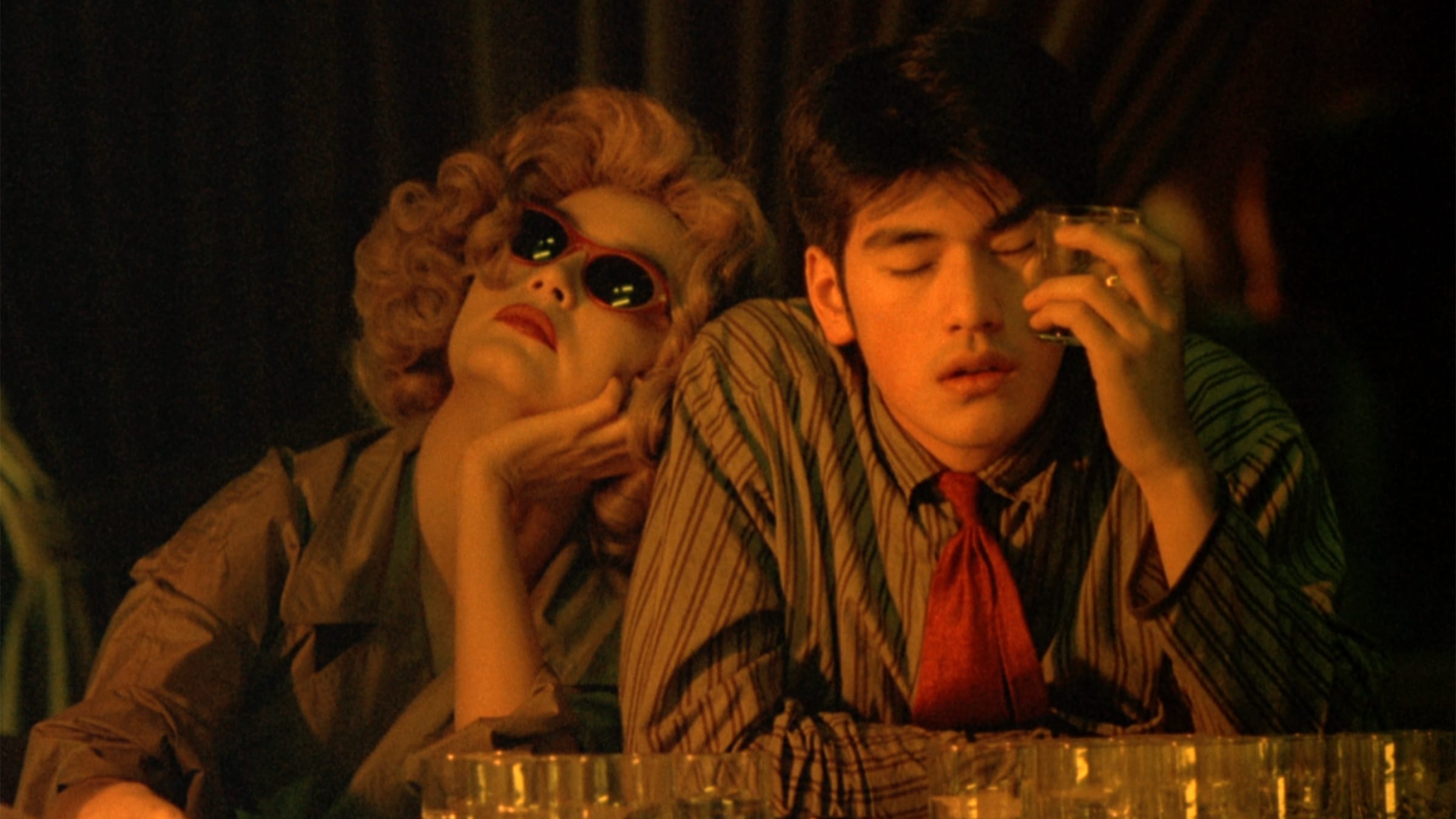
Chungking Express (1994) was the Masculin féminin of the 1990s, a pop art
movie about cool twentysomethings looking for love in the city that has
replaced Paris as the center of the world-cinema imagination. What
Jean-Luc Godard did for “the generation of Marx and Coca-Cola” in the
mid-1960s, Wong Kar-wai did for restless Hong Kong youth during the
anxious decade that preceded the handoff to China. Masculin féminin (1966)
and Chungking Express were the first films in which their respective
directors focused predominantly on characters who were around ten years
their juniors. This generation gap imparts a sense of distance mixed with
tenderness, and also focuses the films on the dominant issue for
heterosexual young adults: how to negotiate the desire and confusion they
feel vis-à-vis the opposite sex.
Made while Wong was taking a break from the lengthy, difficult
postproduction of his only martial arts period picture, Ashes of Time
(1994), Chungking Express was intended as a money-generating quickie for
the director’s Jet Tone company, and indeed the movie, which was made in
three months, start to finish, has a wacky spontaneity that is unique in
his oeuvre. Wong piled on the commercial elements: the first half is a nod
to the gangster thriller, the second is pure screwball romance. The
protagonists of both sections are cops, and the four main actors are all
Asian box office attractions: pop music idols Takeshi Kaneshiro and Faye
Wong, Hong Kong action/dramatic star Tony Leung Chiu-wai, and veteran
actress Brigitte Lin Ching-hsia (the film’s only fortysomething star,
coming out of retirement for a cameo appearance as a drug smuggler,
fashioned as an homage to another middle-aged cult actress, Gena Rowlands
in Gloria). Again comparing the film with Masculin féminin, the female
leads in both are played by singers with youth culture followings. But
unlike Masculin féminin’s Chantal Goya, a pop singer playing the role of a
pop singer, Faye Wong in Chungking Express plays a waitress, albeit one
who becomes identified with two songs—the Mamas and the Papas’ “California
Dreamin’” and a Cantonese cover of the Cranberries’ “Dreams” by a singer
named Faye Wong—which accompany her as she works. While the difference in
strategy is minimal—at one point or another, both performers either
lip-synch or dance to their own recorded voices—the difference between
Godard’s and Wong’s depictions of the female characters is enormous. The
Goya character is monstrous in her narcissism and vacuity. On the other
hand, Wong is as empathetic with Faye Wong’s waitress as he is with the
cops played by Kaneshiro and Leung.
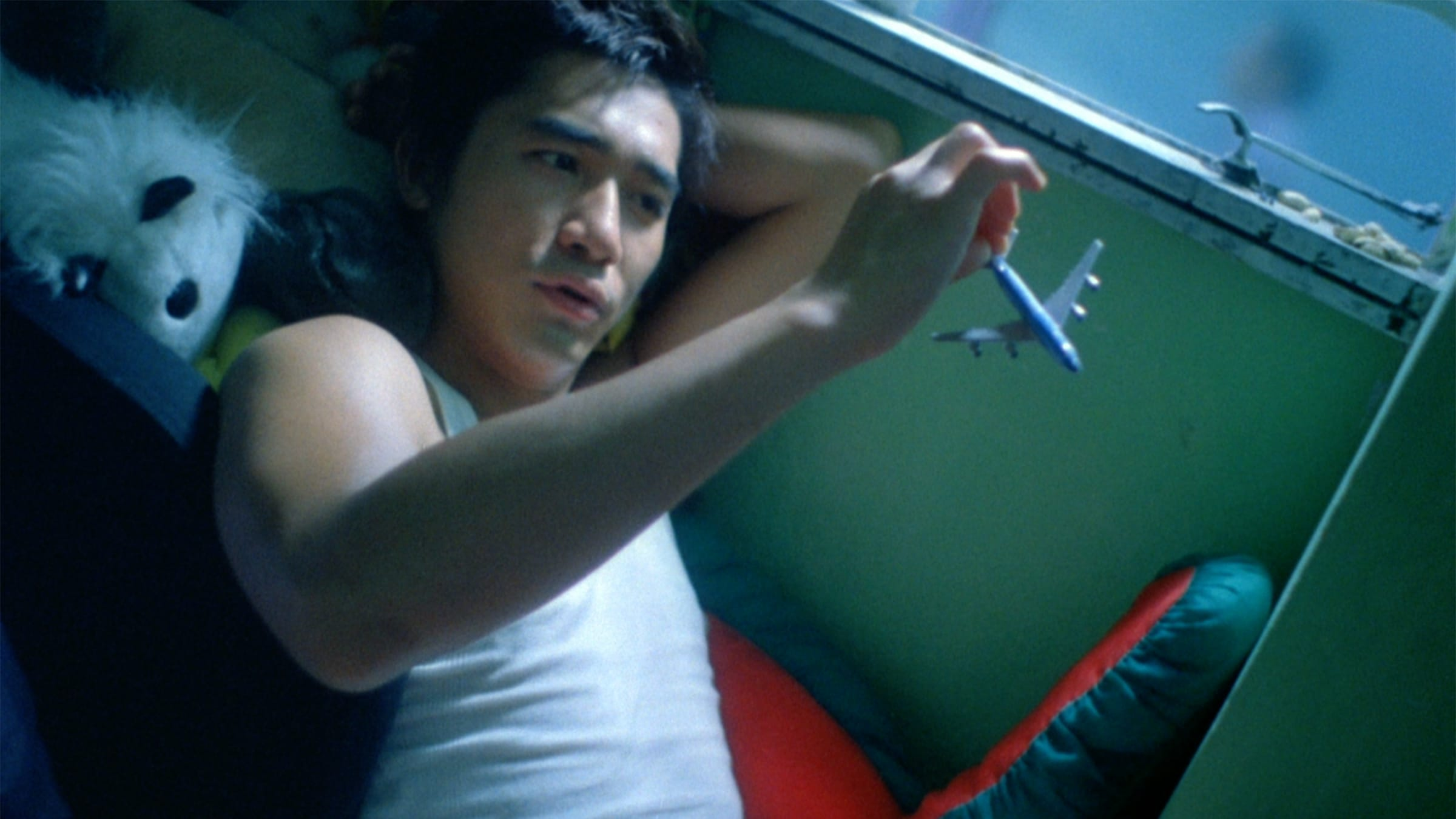
In Asia, the film didn’t disappoint, sweeping the Hong Kong Film Awards
and doing well at the box office. In the United States, however, the
turnout was disappointing, perhaps because Miramax, which distributed
Chungking Express as a presentation by Quentin Tarantino’s Rolling Thunder
company, was perplexed about whether to market it as an art film or an
Asian exploitation flick. Nevertheless, the combination of filmmaking
pyrotechnics and wistful romance proved irresistible to cinephiles.
Chungking Express established Wong’s reputation as a major auteur, the
most glamorous and enigmatic since Godard. It also marked a turning point
in his work, a shift in direction that is actually signaled within the
film, when the desultory underworld revenge narrative fades away and is
replaced by a love story as simple as it is delirious. Writing in 1966
about Masculin féminin, Pauline Kael observed that “Godard has liberated
his feeling for modern youth from the American gangster-movie framework
which limited his expressiveness and his relevance to the
non-movie-centered world.” Wong makes the same move in Chungking Express,
underlining the separation by placing it midway through the film.
The narrative of Chungking Express comprises two separate and distinct
stories. Although they are thematically related, each has its own central
characters and locations. (If you look sharply, however, you can catch
glimpses of characters from the second part in a few shots in the first.)
The first story harks back to the genre action elements of Wong’s first
feature, As Tears Go By (1988), while the second section prefigures the
romantic yearnings of his later films Happy Together (1997), In the Mood
for Love (2000), and 2046 (2004). Ashes of Time, which Wong finally
completed shortly after Chungking Express, is also a genre action picture
but teeters on the brink of abstraction. (In the revised 2008 version,
Ashes of Time Redux, Wong removes some of the stylistic links to genre,
making the narrative even more abstract.) And Fallen Angels (1995), which
Wong conceived as the third section of Chungking Express but spun off as a
separate feature, is a hyperbolic amalgam of gangster violence and mad
love, as ungeneric a noir as could be imagined, and not only because the
frequent fish-eye-lensed close-ups turn its cast of beauties, male and
female, into a bunch of banana noses. Wong’s reputation as an art-house
director rests with the three later, increasingly operatic romances—Happy
Together, In the Mood for Love, and 2046—in part because genre films have
never been fully accepted within the art-film canon, and in part because
Wong’s mastery of sensuous polyrhythms and lush visual and aural textures
was not as fully developed in the earlier films.
Minimally plotted, each section of Chungking Express focuses on a lovesick
cop who pines for his ex-girlfriend until another woman captures his
attention. One might venture that the first section, which opens with one
of Wong’s signature step-printed chase sequences, this one through the
teeming corridors and blind alleys of Chungking Mansions—a warren of
flophouses, cut-rate shops, and import-export “businesses” that is a haven
to criminals and the poor of all nations—is something of a blind alley
itself, one which Wong drops after less than forty minutes in favor of a
more promising romantic situation. It’s as if the film itself is looking
for love in the same way that its characters are—by trial and error. The
protagonist of the first section is a plainclothes cop, officer no. 223
(Kaneshiro), who is seen running hard in that opening chase scene and in
another, shorter chase where he makes a collar, pretty much the only
exercise of his profession in the film. Mostly what no. 223 does is obsess
about his girlfriend, May, who jilted him on April Fools’ Day. No. 223 has
given May until May 1, his twenty-fifth birthday, to come back to him. He
marks the days of this countdown by buying cans of pineapple (“May loves
pineapple,” he tells us in voice-over), each dated to expire on May 1. If
she doesn’t call him on his birthday, the relationship will expire as
well. It is doubtful that May (whom we never see in the film) knows or, if
she did, would care at all about this ultimatum.
But like objects in a dream, the pineapple cans, and their looming sell-by
date, condense multiple meanings and associations. May was no. 223’s
number-one girlfriend, but he must let go of his love for her (“When did
everything start having an expiration date?” he muses) in order to move on
to the next stage of his life, a transition marked by his birthday. Then
there is the canned pineapple itself, whose mass-produced sweetness is as
cloying as the puppy love no. 223 feels. In fact, with May 1 only hours
away, he tries to feed some of the syrupy stuff to his dog, who, like May,
manifests no interest in such an absurd ritual of devotion. But no. 223’s
eating orgy—he downs all thirty cans—transfers his heartache to his tummy,
so that in puking up the pineapple he is relieved of the past and
immediately fancies himself in love with the next woman he meets.
Hovering over the web of associations that defines the psyche of no. 223
is another countdown: in 1994, the handover of Hong Kong to China was only
three years away. Comic anxiety about sex and romance is a front for the
deeper fear that political freedom—an entire way of life—has an
expiration date in the near future. The most striking difference between
Masculin féminin and Chungking Express is the constant political activity
and chatter in the former and its total absence in the latter. While this
difference reflects a change in youth culture from the 1960s to the 1990s,
it doesn’t mean that Wong is an apolitical director. Rather, like Eastern
European filmmakers of the Soviet era or, more to the point, like some of
his Chinese mainland contemporaries, he smuggles politics into his films
through metaphor. Thus the loaded meaning of the expiration date of canned
goods.
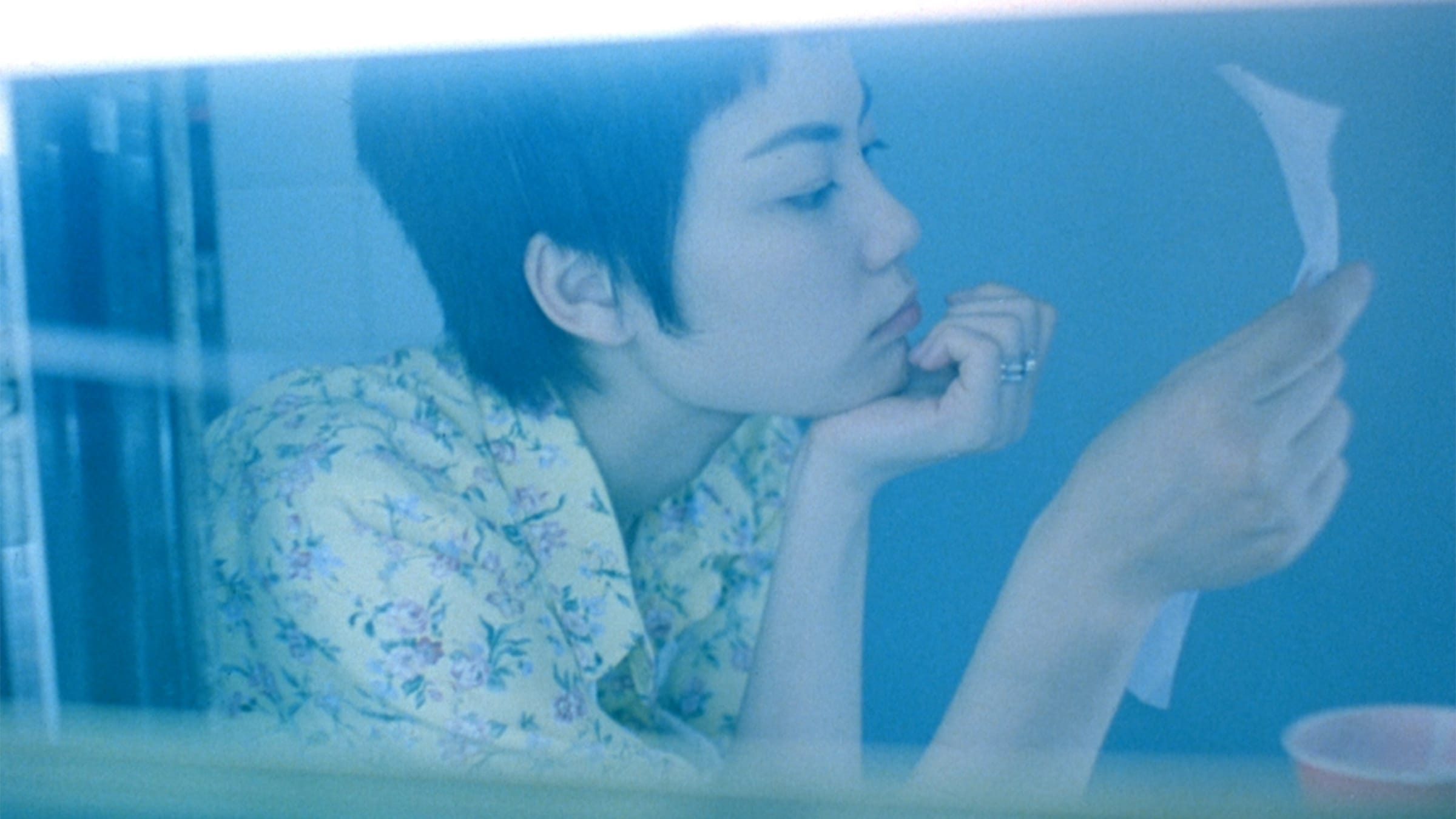
The darker aspect of the collective anxiety about the handover is
reflected in the situation of Brigitte Lin’s blonde-wigged gangster. When
someone slips her a can of sardines dated May 1, she gets the message:
time is running out for her. If she doesn’t deliver the drugs that her
two-timing couriers have stolen, she will die. She and no. 223 run into
each other—literally collide—in the opening chase sequence. A smart cop
would spot that her wig, dark glasses, and trench coat are a disguise, but
no. 223 doesn’t realize then, or when he picks her up in a bar exactly
“fifty-seven hours later,” that she is potentially the collar of a
lifetime. His vision clouded, like so many of Wong’s male protagonists, by
déjà vu—by the nearly forgotten “impact” of their first encounter—he
fancies himself in love with her. They wind up in a hotel room, where she
instantly falls asleep and he consumes four chef salads (there is hardly a
scene in the film that doesn’t involve eating), and then removes her shoes
and polishes them before leaving. Their relationship is utterly chaste,
and yet the small acts of tenderness they extend to each other free them
both—her to take care of business and him to resume his search for love.
Chungking Express, the title under which the film was released in the
United States, is not a direct translation of the original Hong Kong
title, Chung hing sam lam (Chungking Jungle). The U.S. title suggests the
kind of synthetic space that only exists in dreams or movies—Chungking
referring to Chungking Mansions, the primary location of the first
section, and Express to the Midnight Express, the popular take-out
restaurant around which the action of the second part revolves. The
Midnight Express has already figured in the first section: it’s where no.
223 goes to call his answering service (his password is “love you for ten
thousand years”) to find out if there have been any calls from the elusive
May. The proprietor tries to fix him up with one of his waitresses, who is
also named May, but no. 223 isn’t interested. When he stops at the
Midnight Express after his night with the mysterious blonde, May has moved
on, and the proprietor suggests that no. 223 try the new waitress, Faye
(Faye Wong). No. 223 accidentally sees an Indian man washing windows and
responds, “Do you think I go out with guys?” Hopelessly confused—or maybe
just a bit stupid—no. 223 proves himself not yet ready for love. He leaves
the Midnight Express and is never seen again. As far as the narrative of
the film is concerned, his story is over.
Into his place steps uniform cop no. 663 (Leung), who routinely stops by
the Midnight Express to pick up a chef salad for his flight attendant
girlfriend. Wong gives Leung, who will become his filmic alter ego, an
entrance to die for. The shot is ostensibly from Faye’s point of view, but
as no. 663 walks into close-up, she’s not the only one instantly smitten
by the most soulful set of peepers in contemporary cinema. There is,
however, someone who is immune to his charms, and soon no. 663 is jilted
just like no. 223. Faye, using the keys that his ex-girlfriend drops at
the Midnight Express, begins visiting no. 663’s apartment while he’s
walking the beat, to do a bit of housecleaning. Wong will use this
home-invasion ploy to more carnal effect in Fallen Angels, but nothing
else in his films comes close to the giddiness with which Faye applies
herself to housework as transgression, swiveling to the beat of “Dreams”
on the soundtrack, or her delirious shift from joy to anguish when,
crawling around in no. 663’s bed, ostensibly to straighten the sheets, she
finds a woman’s long black hair under the pillow. In her first major
acting role, Faye Wong takes over the film and runs with it. Her comic
timing and her impulsiveness recall Katharine Hepburn in Bringing Up
Baby—an association underscored when she leaves a huge toy cat, in this
case a Garfield doll (the director would never be so obvious as to make it
a stuffed leopard), in no. 663’s apartment as a substitute for the large
white teddy bear left there by his ex.
As in Bringing Up Baby, opposites attract. No. 663, like the Cary Grant
character, is an introvert, while Faye, like the Hepburn character, is
dizzyingly extroverted. He’s so lost in his own head that he talks to a
bar of soap to keep himself company. Not only does no. 663 fail to notice
that Faye is gaga over him, he’s unaware that she’s been secretly
transforming his apartment, until they come face-to-face at his front
door—she’s leaving, he’s arriving, and when she sees him she’s so
discombobulated that she slams the door in his face. It may be the only
laugh-out-loud moment in Wong’s oeuvre. The two actors have terrific
chemistry: their brief scenes together are more than sexy; they have an
innocence that never returns to Wong’s movies after Chungking Express—a
fling of a film, where regret is fleeting and joy triumphs, though who
knows for how long.
JUNE 23, 2020
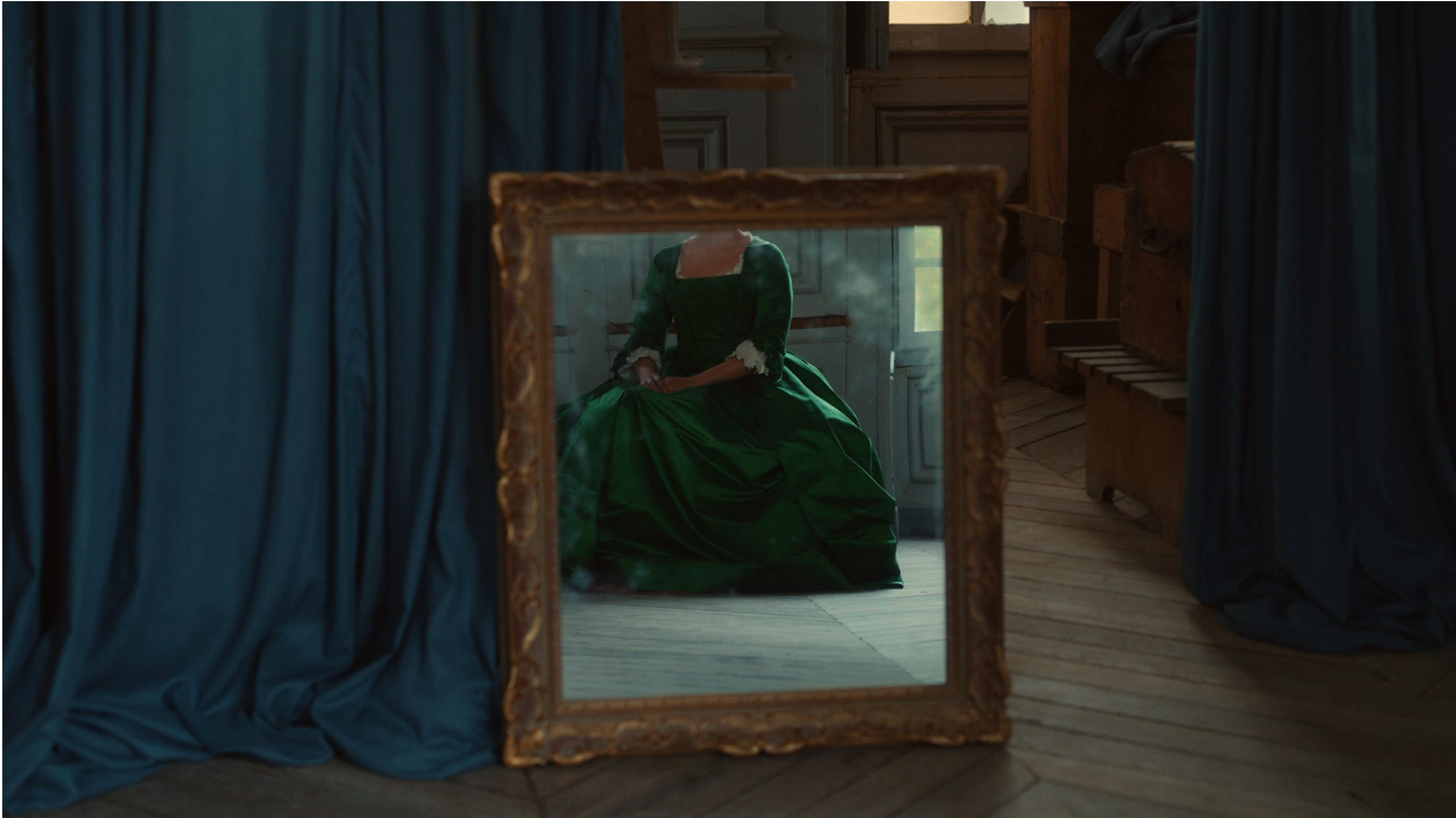
In Céline Sciamma’s unabashedly romantic and fiercely political film
Portrait of a Lady on Fire (2019), two women fall in love and set each
other free, if for only a few glorious days or weeks. It is one of the
most unforgettable depictions of love foresworn, of lesbian love, of any
true love, in cinema. Around the besotted lovers, the film envisions a
social contract defined by a strong sense of community among women, no
matter their age or class. It takes place in the late eighteenth century,
but it also speaks to our own time, as many women continue to call for
intersectional solidarity in their fight for equality. It is no accident
that here the engine of this revolution is art. Sciamma, who grew up
outside Paris and would bike into a neighboring town to go to the movies,
creates a provincial world in which art—both as a technique governed by
solemn tradition and a practical tool for remaking one’s world—is a part
of daily life, and in which the artist’s gaze is reciprocal, not
one-sided. Similarly, the film presents the act of falling in love not
through the (quintessentially male, one might say) lens of conquest and
possession but through one of equality between the two lovers, creating a
reality in which each can truly see the other.
The preoccupations with longing and looking—who is gazing and who is
returning the gaze—are not new for Sciamma, nor is the centering of a kind
of character not often seen on-screen. The director’s previous three
features are poignant contemporary coming-of-age stories: In Water Lilies
(2007), an adolescent girl experiences her first lesbian crush. In Tomboy
(2011), a young child, Laure, tests the bounds of sexuality and gender.
Girlhood (2014) is the story of a teenage French-African girl who finds a
way of navigating the violence and poverty of her life by joining an
all-female gang. Although Sciamma’s stories often tell of yearning—and
always from a queer, female point of view—the director is far from a
fatalist: in her films, love paves the way to personal growth and creates
a keen sense of one’s own self-worth. Like Portrait of a Lady on Fire,
Water Lilies and Tomboy both revolve around intense looking. And in
Tomboy, Laure’s portrait being drawn is a painful reminder of just how
powerful it can be to be seen by another. Another memorable moment of
recognition takes place in Girlhood, when the heroine, Marieme (Karidja
Touré), watches her best friends dance to Rihanna’s “Diamonds.” Here, the
young black women claim their spots as divas, agitators, rebels, rather
than people shunted off—by the education system and by the men around
them—into roles of caregivers or sex workers. When the reserved Marieme
turns from observer to participant and joins the dance, it is a thrilling
instance of feminine jouissance: sensual, luminous, radiating warmth. This
vision of joyous sisterhood returns in Portrait of a Lady on Fire,
Sciamma’s first period film, in which she shows us that although desire
leaves us vulnerable and exposed, it also defies solitude.
The film takes place on an isolated island off the northern coast of
France. A young painter, Marianne (Noémie Merlant), has been hired,
ostensibly as a walking companion for an obdurate heiress, Héloïse (Adèle
Haenel). Marianne’s real job, however, is to paint a bridal portrait of
Héloïse without arousing the suspicion of her model, who is resisting
being married off to rescue the family’s fortunes and thus refuses to
pose. Héloïse has been brusquely pulled from her happy life in a
Benedictine convent by her countess mother to marry a wealthy Milanese man
previously engaged to her older sister, who committed suicide by jumping
off a cliff. “In her last letter, she apologized,” Héloïse will say of her
sister, “for leaving me her fate.” Marianne arrives on the island soaked,
having dived into the water to rescue her painting supplies after the
rocking boat knocked them overboard. A bit later, she sits naked by the
fire at her new residence, facing her dripping canvases. In this scene,
Sciamma deliciously evokes the female nude as a sexually charged subject
in painting. It is intensely pleasurable to look at Marianne, but her own
pleasure, in the warmth and in her tobacco, and her sense of liberty are
equally striking. The moment also prefigures a metaphorical denuding.
Governed by her training in portraiture, Marianne begins with rigid
notions of composition, which Héloïse will come to challenge.
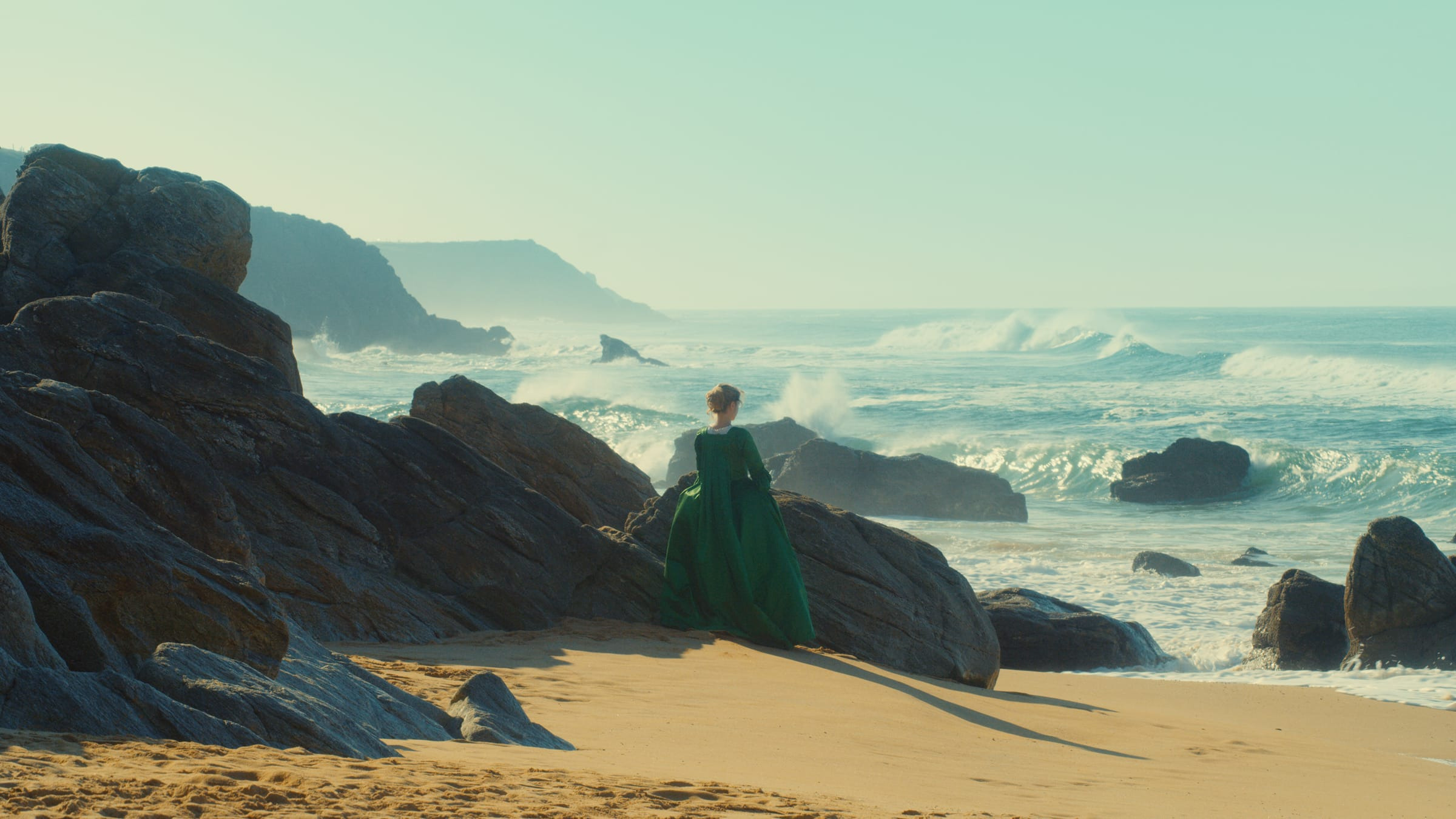
“In this film, the consequences of men’s authority are omnipresent, but women take the reins, and their isolation becomes a measure of their freedom.”
Sciamma has referred to Portrait of a Lady on Fire as a “manifesto about
the female gaze.” Few directors have embraced the idea of women’s autonomy
as radically as she has; in this film, the consequences of men’s authority
are omnipresent, but women take the reins, and their isolation becomes a
measure of their freedom. Indeed, the film creates, for a time, a world in
which its main characters can exist nearly free of male scrutiny. For a
long, exquisite stretch, Marianne and Héloïse do almost nothing but look
at each other: the artist observing the subject, the subject beginning to
return her gaze, their relationship unhurriedly developing and deepening
and taking on erotic tension.
Sciamma presents the romance between Marianne and Héloïse within a frame
of Marianne’s memories of it. The film begins some unspecified time after
its main events, with Marianne’s female pupils sketching their teacher in
class, and then discovering her portrait of Héloïse, skirts ablaze. Near
the conclusion, Marianne views in a salon a portrait of Héloïse, now a
wife and mother, by another artist. It seems that Marianne has managed to
make a life of considerable freedom for herself, although she remains
haunted by the love that might have been.
But even though we barely glimpse men in the film, their power to control
the fates of women can never fully be shaken off. Because of her
aristocratic status, Héloïse has no choice but to ultimately marry her
wealthy suitor, and the lovers’ time together must end. Marianne has a
fairly unusual degree of independence for a woman in the 1770s—making her
own living as a portrait painter, traveling alone, living alone, it
seems—but we can guess that this liberty has been made possible at least
in part by the success of her artist father, the training he gave her, and
the fact that she will inherit his studio. We learn that she has submitted
her work for exhibition under his name. And indeed, Marianne must
internalize the male gaze when making portraits of women like Héloïse for
men’s consumption.
Héloïse’s mother is the film’s fierce miniature study of the ways women
have often had to internalize patriarchy and act to further its aims.
Valeria Golino as the countess is a lovely, albeit stern, enforcer of the
Lacanian law of the father. The fact that no man is physically present to
command her actions (we are told nothing of the count) makes her tormented
efficacy all the more arresting—and devastating. For her, the isolation of
the rocky island represents exile, offering none of the feminine intimacy
it does the lovers, or the maid Sophie and the community of village women,
members of which we briefly meet at an outdoor celebration and in an
abortion scene. “She was waiting for me,” the countess says wistfully of
the imposing visage in her own bridal portrait. The painting idealized
her, an idealization that has turned bitter, if we consider that its
favorable impression led to her entrapment. The austerity of the landscape
and the family residence reinforces our initial impression of the place as
a wintry prison (I kept thinking of Napoleon on Elba, and of windswept
moors and dark interiors in Victorian novels). It is the countess’s
absence for most of the film that allows for Marianne, Héloïse, and
Sophie’s cozy idyll, though they know it must end with her return and the
completion of the portrait.
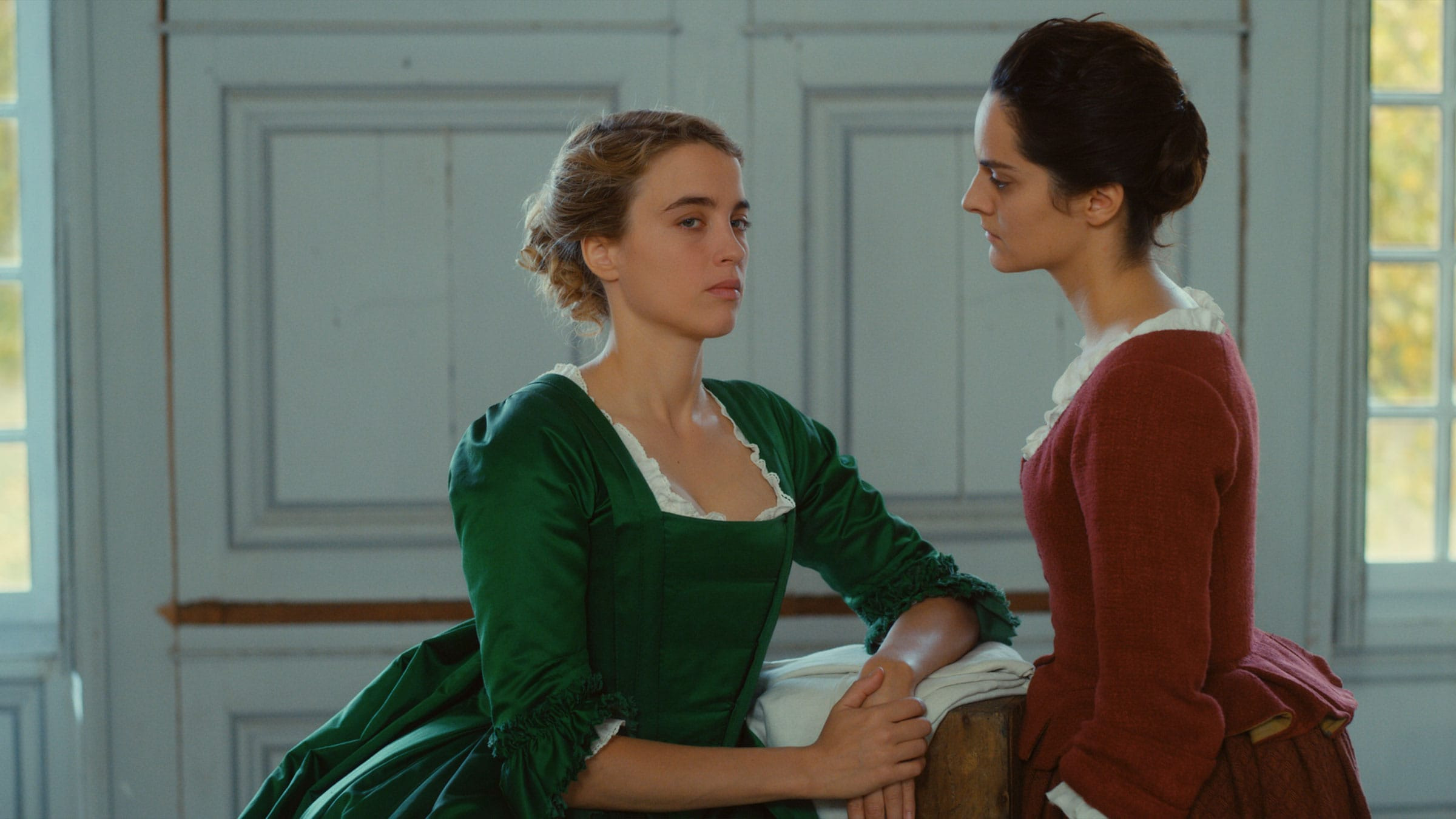
“It is the muse speaking up that sets off the transformation of the relationship between her and the artist into a true meeting of the minds, which can then bloom into passion.”
Sciamma and the cinematographer Claire Mathon, who also photographed Mati
Diop’s Atlantics (2019), convey beautifully the island’s unstable climate.
The acuteness of the sunlight outdoors reminds me of the divine brightness
in Paul Gauguin’s Vision After the Sermon, painted in Brittany, not far
from the movie’s setting. Natural light seems to permeate the film from
the start, indoors as well as out. The choice to use digital cameras
allowed Sciamma and Mathon to capture interior scenes in much lower light
than might otherwise have been possible, contributing a great deal to the
painterly quality of the images. A cool light seeps into the study where
Marianne sets up her canvases when she must paint at night, from her
mind’s eye, and into Marianne’s visions of Héloïse emerging from the dark
in a white gown. The startling glow of that whiteness—like that of the
peasants’ bonnets in Gauguin—is almost blinding. The film weaves a series
of oppositional ambiences: wet and dry, fiercely lit and swathed in
shadows, warm and cold. On Héloïse’s first walk with Marianne as
chaperone, the dunes are buffeted by strong, dry winds. And yet the
morning mist offers a welcome shelter from the glare of the sun, and
creates images that echo the early one of the wet canvases. That coolness
is offset by the warmth of the fireplace in the kitchen where Marianne,
Héloïse, and Sophie pass much of their time in close camaraderie, playing
cards, cooking together (in a subversion of the expectations of their
class), and telling stories. Fire appears as domestic hearth, as
premonition of passion (especially in the bonfire scene in the village),
and, again, as a homely, comforting blaze, during the abortion that
Marianne and Héloïse help Sophie to procure.
Sciamma imbues the abortion scene with uncanny intimacy. Sophie’s holding
the tiny hand of the midwife’s baby during the procedure is one of the
fiercest feminist gestures I’ve seen in film in recent years. “Look,”
Héloïse commands Marianne. Back at the mansion, they pull a mattress to
the floor, and by the fire’s glow, Marianne paints Sophie, still flushed
from pain, with Héloïse posing as the midwife. Héloïse’s order suggests
that art can be an act of solidarity—a meaningful encounter with another.
But perhaps it also means that art cannot be truly great without risk, of
breaking new aesthetic ground or of touching a raw nerve. Sciamma has said
that a line in L’événement, a memoir by the French writer Annie Ernaux
about an illegal abortion she had in 1963, was an inspiration for this
scene in Portrait of a Lady on Fire. “I do not believe there exists a
Workshop of the Backstreet Abortionist in any museum in the world,” Ernaux
writes wistfully. Paint what we really see, Héloïse seems to be telling
Marianne—a potent challenge.
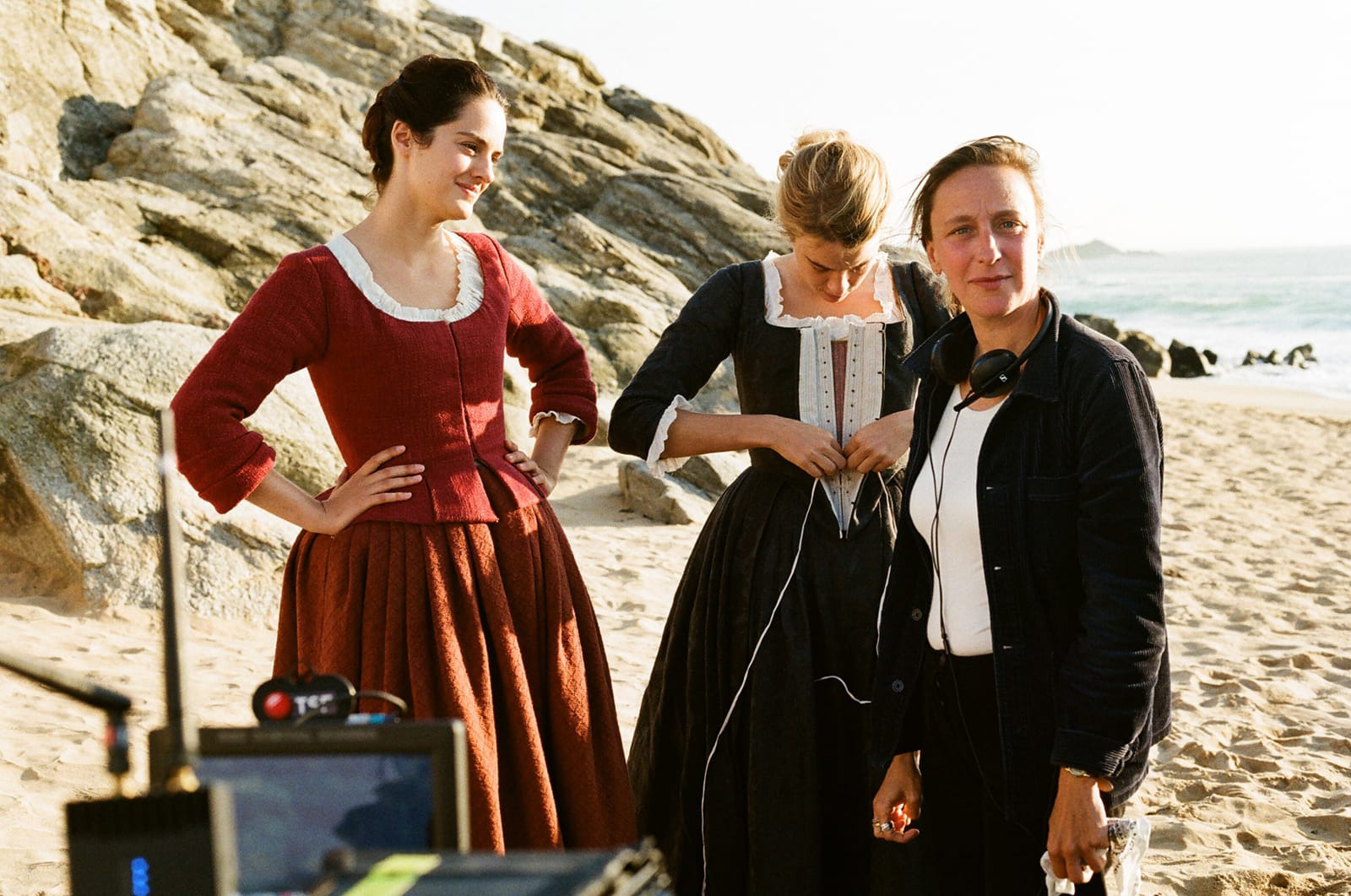
Although Héloïse steps behind the canvas of her own portrait to judge its
attributes, Marianne does not relinquish all her artistic authority. Only
one hand wields the brush. Héloïse’s brilliance lies in recognizing her
latent power as an inspiration and source, and demanding that her
physical, earthy presence, and her despair, not be denied by art but
instead allowed to fuel and dictate its form. Marianne’s disquietude about
capturing the essence of her subject—does it lie in the sculptural folds
of the dress, the slanting of the light, the positioning of the hands, the
forceful softness of the earlobe?—communicates representation as not just
an aesthetic quest but also a philosophical one. Each time Marianne
steadies her gaze, her muse’s piercing blue eyes defiantly peer back at
her. “Is this how you see me?” Héloïse asks incredulously, after her first
portrait is finished. It is the muse speaking up that sets off the
transformation of the relationship between her and the artist into a true
meeting of the minds, which can then bloom into passion.
This daring to look, and look back, is represented in the myth of Orpheus
and Eurydice, which Marianne, Héloïse, and Sophie read and discuss. Did
Eurydice bid Orpheus to turn around for her own sake, rather than just in
order to free him? And did his genius owe as much to their tragic parting
as it did to his talent? The muse is inextricable from the sense of loss.
Marianne, too, has visions of Héloïse at her back. In these apparitions,
Héloïse’s gown shimmers with the luscious light of El Greco’s garments, or
of the gowns in John Singer Sargent’s portraits of society women. It’s a
dazzle that is also ghostly. It hints that perhaps art itself is a kind of
haunting—a transmutation of life into something else, an antidote to
death. Once Héloïse’s betrothal is sealed and she submits to trying on her
wedding gown, Marianne promptly departs; at the last minute, Héloïse bids
her to turn, so that her image, as the lost beloved, can be fixed in
Marianne’s mind.
The two lovers almost meet again, twice. Attending a painting salon,
Marianne—the only woman painter there—comes across that portrait of
Héloïse as a married woman and mother. This formal image of maternity is
far from the humbler, truer painting of the scene inside the midwife’s hut
that they recreated together. Later, Marianne sees Héloïse again, at a
concert in Milan, and cannot take her eyes off her. As the camera slowly
closes in on Héloïse—crying silently, giving in to desolate spasms, and
then beginning to laugh—Sciamma and Mathon forge, in this sublime finale,
a bristling vision of womanhood. Héloïse, in her prime, seems to take full
stock of her loneliness, but her recollection, like Eurydice’s, is
inhabited by the once sweet presence of her lover. She bathes in Vivaldi’s
notes, perhaps remembering the risk that she once took. Thanks to this
image, I’ll never look the same way at the paintings, by Mary Cassatt and
others, of lone women in opera houses and concert halls. I’ll always
wonder how many ardent fires burned—how many were extinguished—before the
last soaring note of whatever music they were hearing. And yet Portrait of
a Lady on Fire offers enduring images not just of longing, or of
resilience, but also of creation. Héloïse suffers, but she also exults—she
is her own creation and creator. Her vision sets her world ablaze.